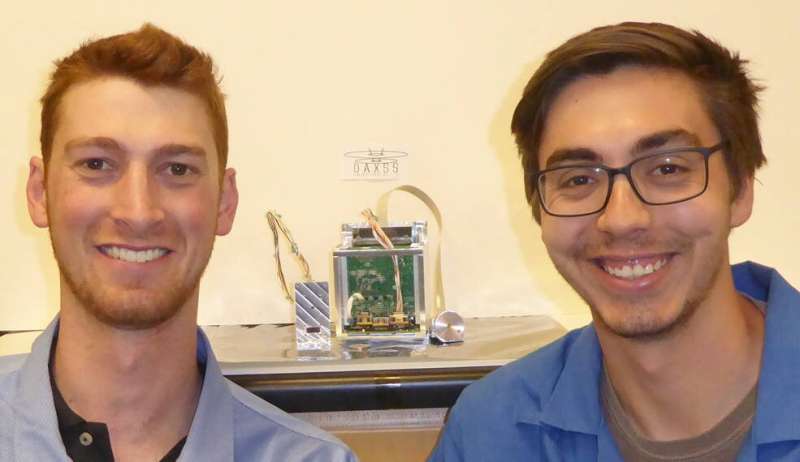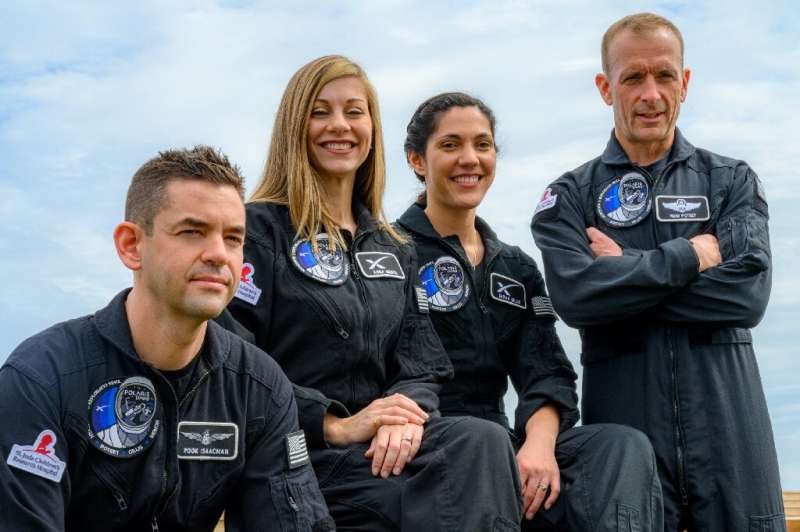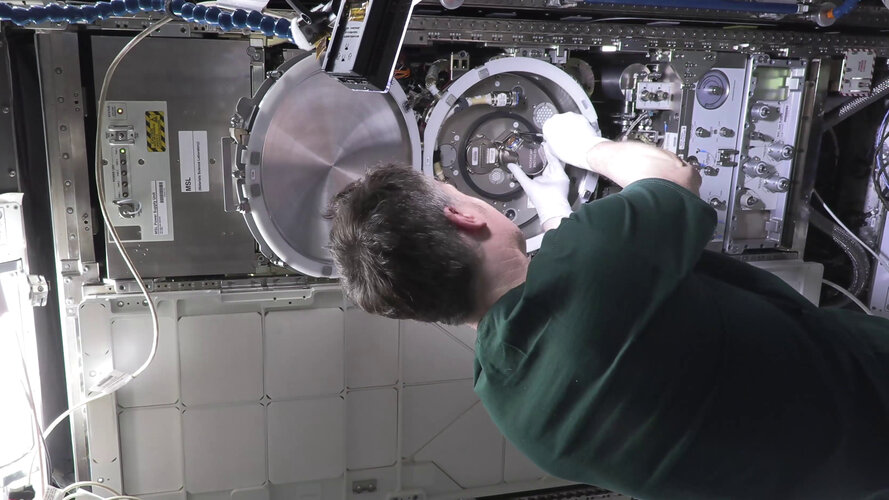
Copernical Team
Innovation by the dozen: ESA funds 12 OPS-SAT experiments

ESA's OPS-SAT is a Swiss army knife in orbit. The 30-cm CubeSat packs a powerful onboard computer and an array of instruments that make it the ideal laboratory for testing innovative new technologies in space.
Thanks to the ESA Discovery programme, 12 new experiments will be doing just that, as they develop software, concepts and protocols that push the robust CubeSat to its limits and that could one day be essential parts of future spacecraft missions.
NASA's MinXSS instrument CubeSat launches to study sun's flares

The Miniature X-Ray Solar Spectrometer 3, or MinXSS-3, successfully launched on the InspireSat-1 small satellite at 7:29 p.m. EST on Feb. 13, 2022. Also known as the Dual Aperture X-ray Solar Spectrometer, or DAXSS, it is the third of three NASA-funded MinXSS CubeSats. It will spend up to a year in low-Earth orbit studying X-rays coming from flares on the sun.
The sun sometimes releases flares, which are energetic bursts of light and particles triggered by the release of magnetic energy on the sun that travel across the solar system. X-rays emitted by the sun during intense flares can interfere with GPS, radio, and other communications signals when they reach Earth. MinXSS will study the energetics of these flares in wavelengths known as soft X-rays, which are particularly impactful on Earth's ionosphere—an electrified upper layer of the atmosphere where communications signals travel.
New Tool Launches for Astronomy Software Users
 The American Astronomical Society (AAS) and partnering organizations Zenodo and the SAO/NASA Astrophysics Data System (ADS) has announced the launch of the Asclepias portal and broker, resources that connect software tools with scientific results to make research progress in astronomy faster, more open, and more reproducible.
Astronomers rely on scientific software to analyze data sets and
The American Astronomical Society (AAS) and partnering organizations Zenodo and the SAO/NASA Astrophysics Data System (ADS) has announced the launch of the Asclepias portal and broker, resources that connect software tools with scientific results to make research progress in astronomy faster, more open, and more reproducible.
Astronomers rely on scientific software to analyze data sets and NASA's X-59 Calls on Texas for Key Testing
 It appears the road to enabling a future that includes convenient commercial supersonic air travel over land demands a substantial pit stop in Fort Worth, Texas.
Who knew?
Aeronautical innovators at NASA and Lockheed Martin did. They have long planned for this milestone in assembling and testing the X-59 Quiet SuperSonic Technology (QueSST) airplane.
Although the X-59 QueSST is
It appears the road to enabling a future that includes convenient commercial supersonic air travel over land demands a substantial pit stop in Fort Worth, Texas.
Who knew?
Aeronautical innovators at NASA and Lockheed Martin did. They have long planned for this milestone in assembling and testing the X-59 Quiet SuperSonic Technology (QueSST) airplane.
Although the X-59 QueSST is China hits back at US after satellite near-misses
 China has stated the United States is in no position to unilaterally set thresholds for emergency collision after the US rejected the charge its Starlink satellites endangered China's space station.
Foreign Ministry spokesman Zhao Lijian made the remarks at a daily news briefing on Thursday, saying such rhetoric by the US did not show a responsible attitude as a major country strong in aer
China has stated the United States is in no position to unilaterally set thresholds for emergency collision after the US rejected the charge its Starlink satellites endangered China's space station.
Foreign Ministry spokesman Zhao Lijian made the remarks at a daily news briefing on Thursday, saying such rhetoric by the US did not show a responsible attitude as a major country strong in aer Mars rover Perseverance notches a year of science, tech achievements
 The Mars rover Perseverance and its feisty sidekick helicopter Ingenuity have set records and pushed new frontiers for interplanetary space exploration since landing on the Red Planet one year ago this Friday.
The flawless landing of the rover in Mars' Jezero Crater, on Feb. 18, 2021, kicked off a year of successes, including the first rock sample drilled on another planet, the first ti
The Mars rover Perseverance and its feisty sidekick helicopter Ingenuity have set records and pushed new frontiers for interplanetary space exploration since landing on the Red Planet one year ago this Friday.
The flawless landing of the rover in Mars' Jezero Crater, on Feb. 18, 2021, kicked off a year of successes, including the first rock sample drilled on another planet, the first ti SpaceX plans new private spaceflight missions, first private spacewalk
 SpaceX plans to launch a new private astronaut mission, Polaris Dawn, from Florida as early as Nov. 1 and will attempt to conduct the first private spacewalk in history, the company announced Monday.
Businessman Jared Isaacman, founder and CEO of the payments company Shift4, will command the mission, having previously he led the first all-private orbital mission in September known as In
SpaceX plans to launch a new private astronaut mission, Polaris Dawn, from Florida as early as Nov. 1 and will attempt to conduct the first private spacewalk in history, the company announced Monday.
Businessman Jared Isaacman, founder and CEO of the payments company Shift4, will command the mission, having previously he led the first all-private orbital mission in September known as In Rocket set to hit Moon was built by China, not SpaceX, say astronomers
 Astronomy experts say they originally misread the secrets of the night sky last month: it turns out that a rocket expected to crash into the Moon in early March was built by China, not SpaceX.
A rocket will indeed strike the lunar surface on March 4, but contrary to what had been announced, it was built not by Elon Musk's company, but by Beijing, experts now say.
The rocket is now said t
Astronomy experts say they originally misread the secrets of the night sky last month: it turns out that a rocket expected to crash into the Moon in early March was built by China, not SpaceX.
A rocket will indeed strike the lunar surface on March 4, but contrary to what had been announced, it was built not by Elon Musk's company, but by Beijing, experts now say.
The rocket is now said t US billionaire announces three more ambitious SpaceX flights

US billionaire Jared Isaacman, who chartered the first all-civilian orbital spaceflight, announced Monday three more private missions with SpaceX—which will include spacewalking and culminate in the first crewed flight of the next-generation Starship rocket.
The first, named Polaris Dawn, will take place no sooner than the fourth quarter of this year, and will be commanded by Isaacman, the founder of payment processing company Shift4.
The program represents a new step for the commercial space sector, as Elon Musk's SpaceX seeks to carry out more ambitious missions that were until now the domain of national space agencies.
In a press call, Isaacman revealed that the Polaris Program, named after the North Star, will be co-funded by himself and SpaceX. He declined to give further details such as total cost, or the percentage each side would contribute.
Materials science in motion | Cosmic Kiss
 Video:
00:02:01
Video:
00:02:01
Watch ESA astronaut Matthias Maurer exchange a sample in the Materials Science Laboratory (MSL) on the International Space Station.
The sample is for an experiment called MICAST that aims to deepen our understanding of the physical principles that govern solidification processes in metal alloys. This knowledge could help improve casting processes on Earth, leading to the development of new lightweight, high-performance materials for future spacecraft and innovation.
Matthias is spending approximately six months aboard the Space Station for his ESA mission Cosmic Kiss. During this time, he will support around 36 European and many more international experiments in orbit.

